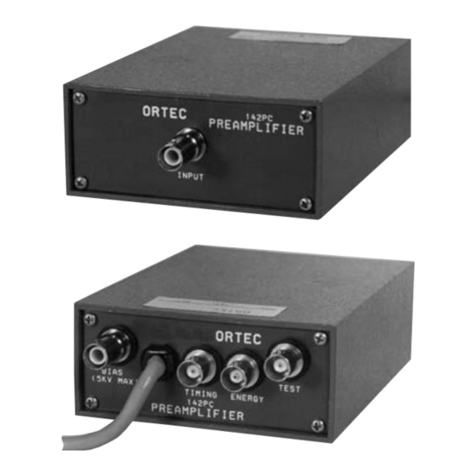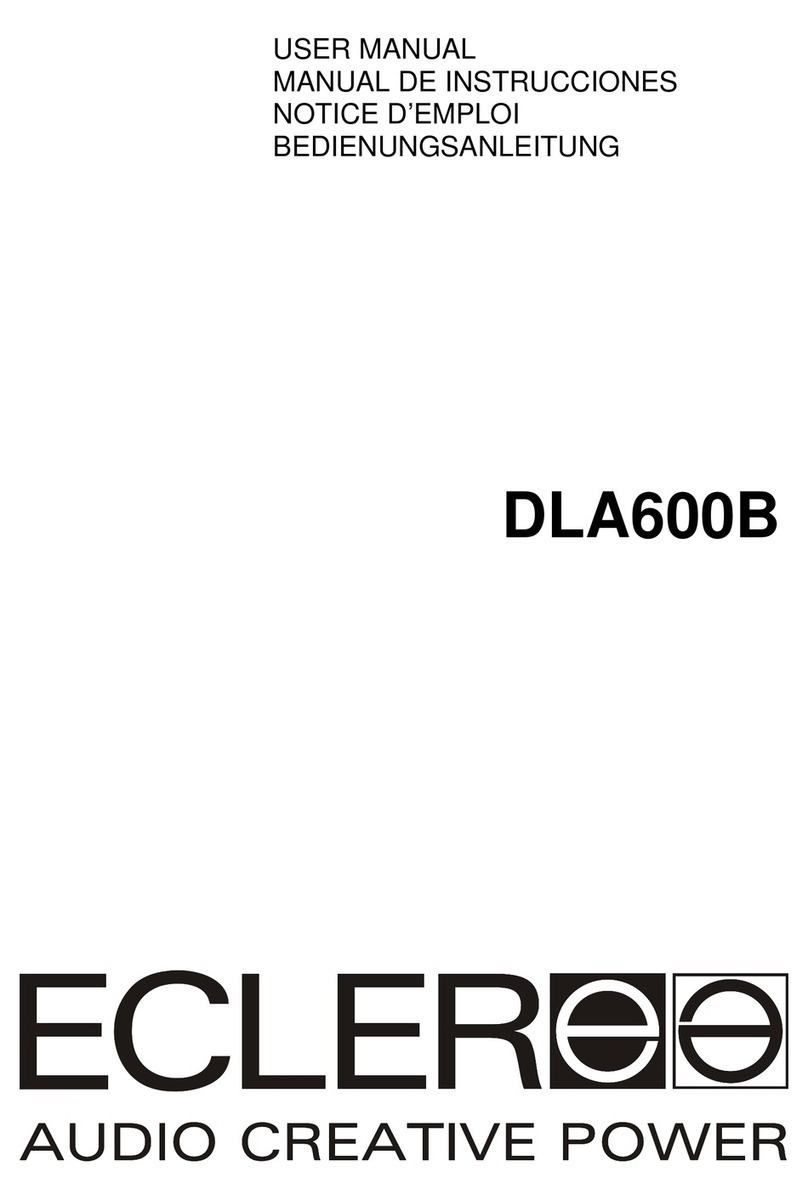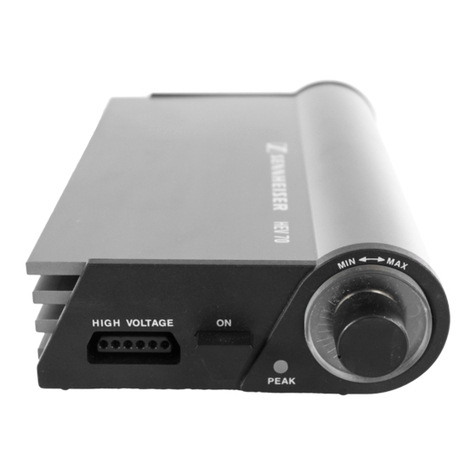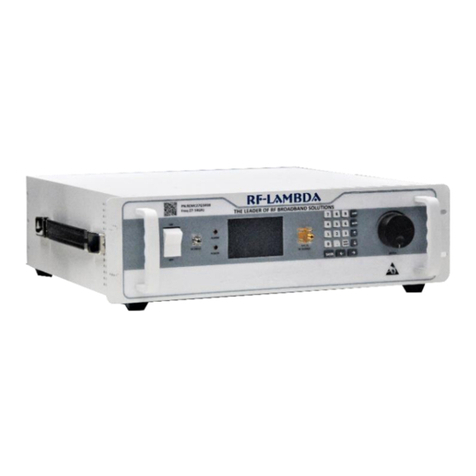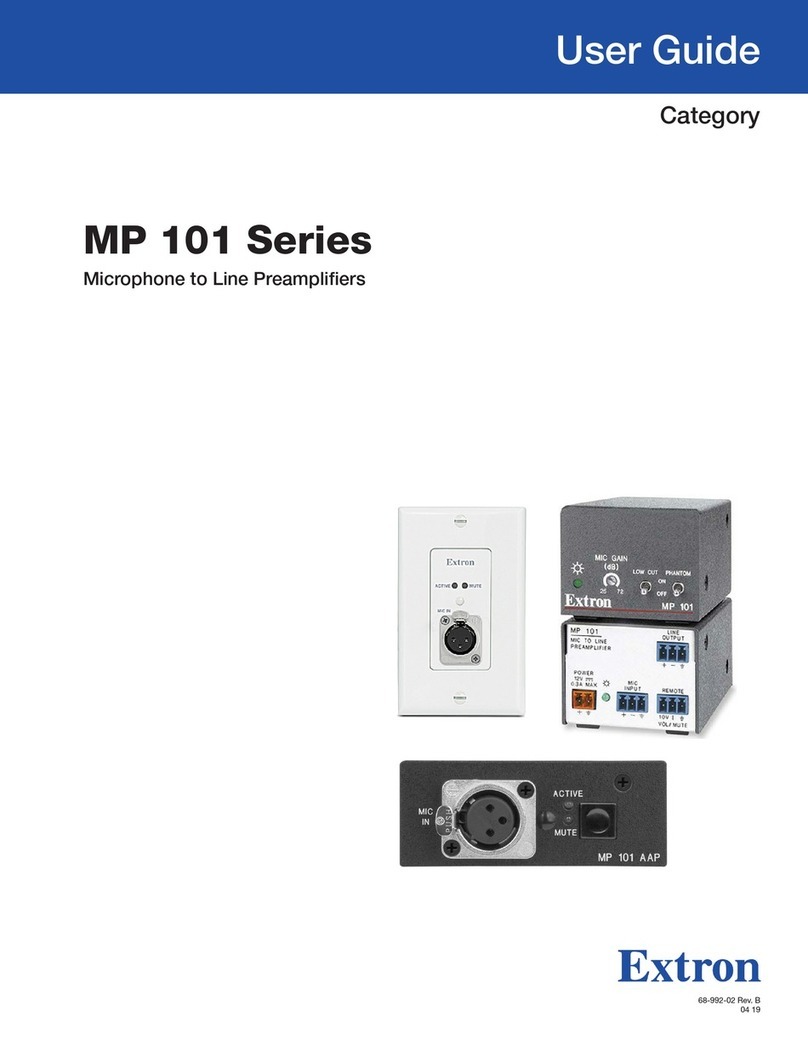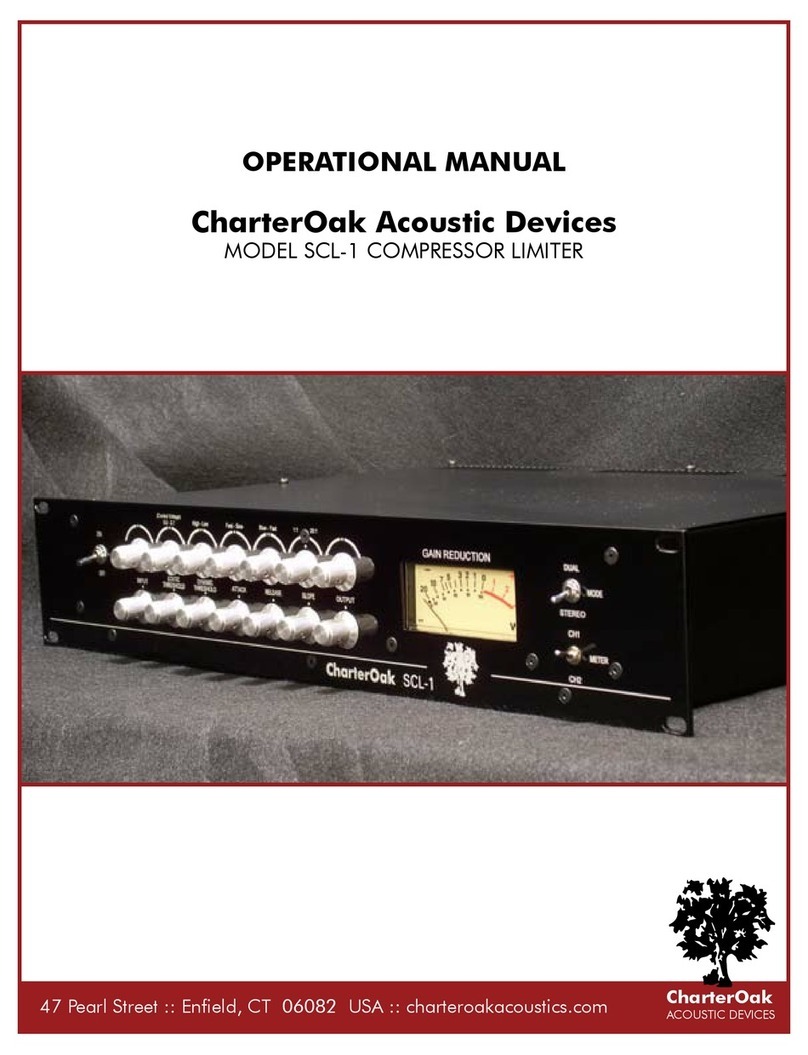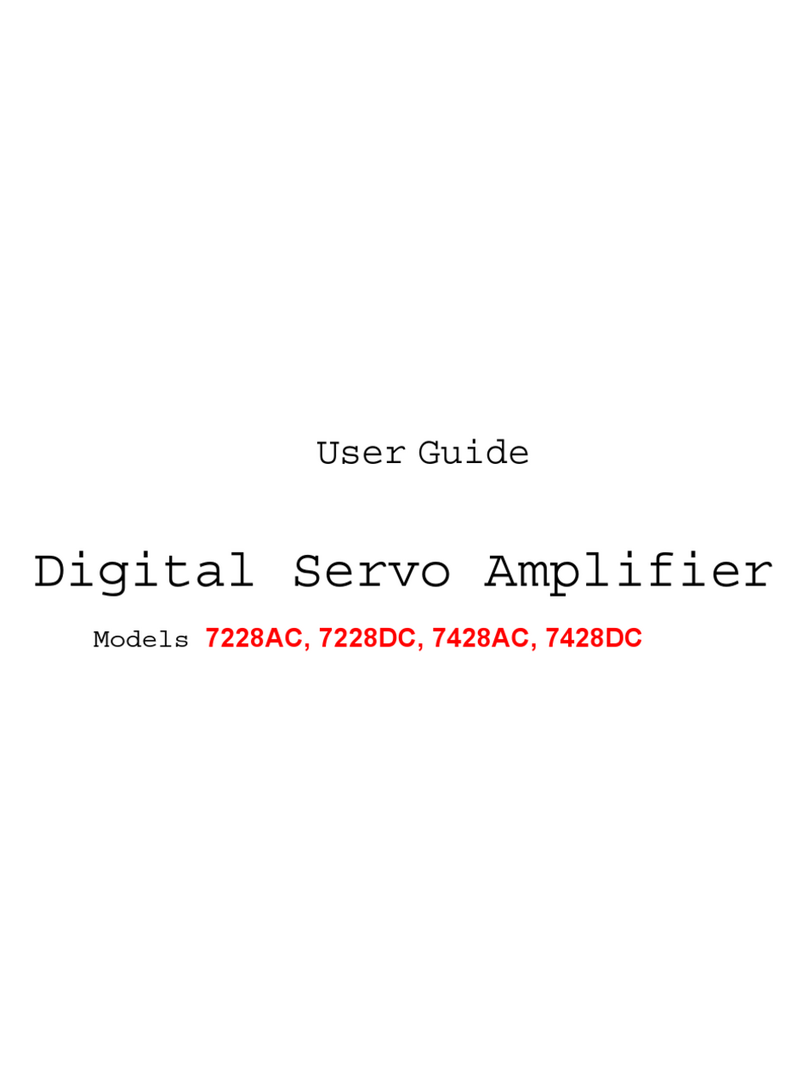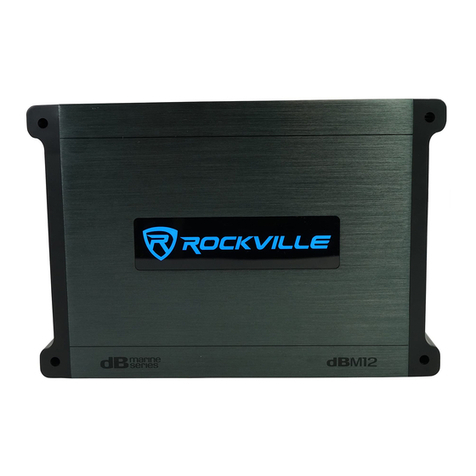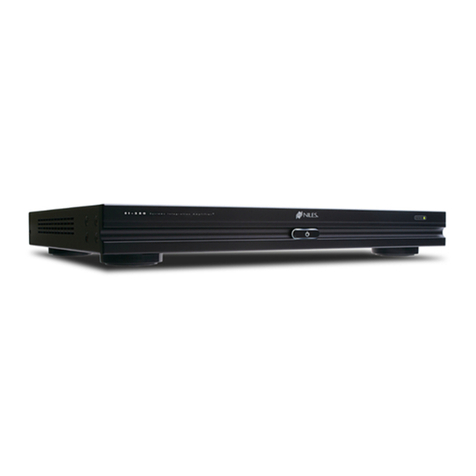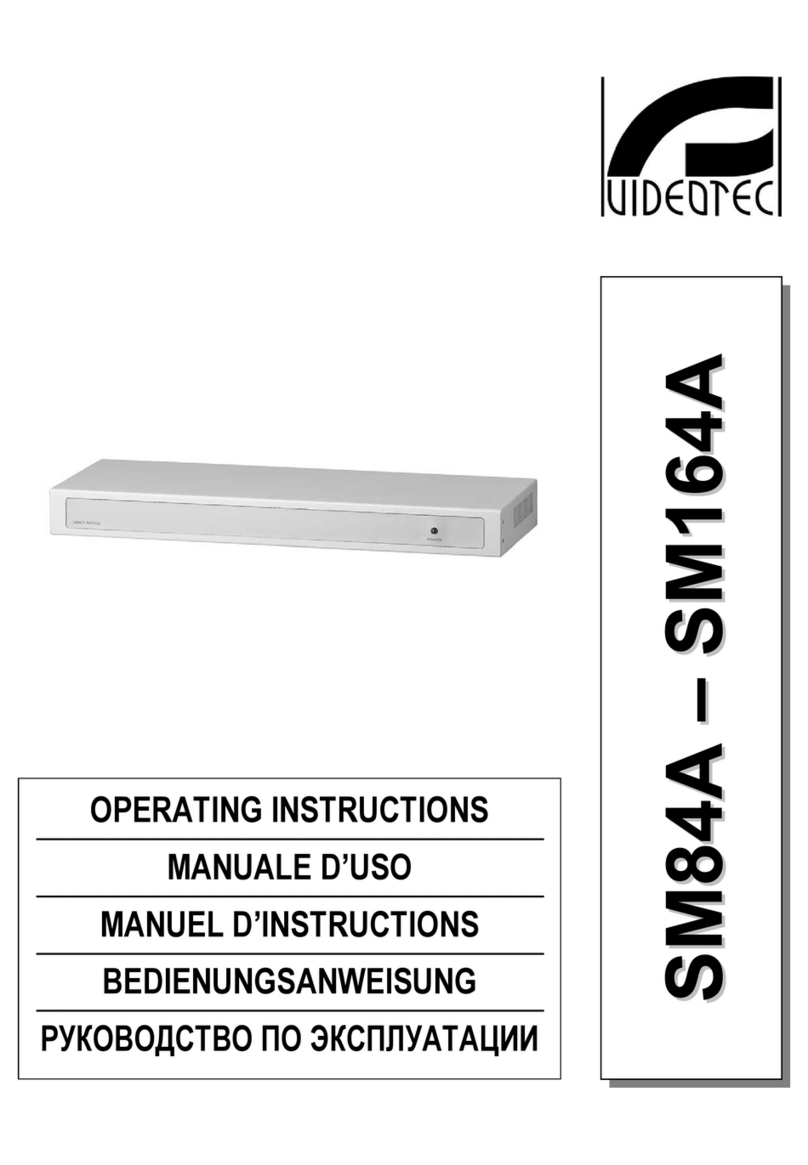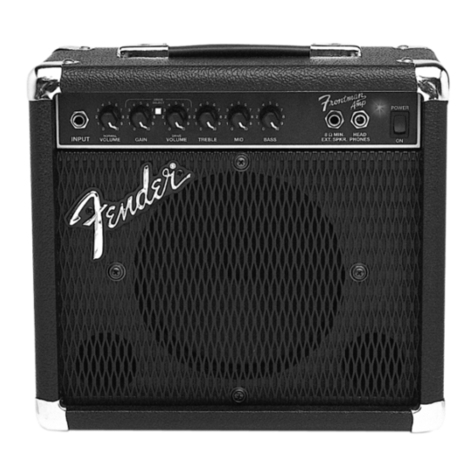Sound Devices MP-1 Manual

Sound Devices, LLC
300 Wengel Drive
Reedsburg, WI 53959 USA
Voice 608.524.0625
Fax 608 524.0655
www.sounddevices.com
P/N 193.002 ©1999-2000 Sound Devices, LLC
Printed in U.S.A
™
SOUND DEVICES
MP-1 Microphone Preamplifier
User Guide and Technical Information
General Description
The MP-1 from Sound Devices is a portable,
battery-powered microphone preamplifier with
phantom power. Designed for high bandwidth
96k/24 digital productions, this studio-quality mic
pre is ideal for critical radio, television, and film
production applications.
With its rugged mechanical and electrical
construction, compact size and high-quality
components, the MP-1 is extremely durable and
easy to use. This highly reliable mic preamp will
provide years of superb audio performance under
the most punishing field conditions.
Features
Audio performance
•Maximum of 66 dB of gain, adjustable in eleven
discrete steps for accurate, repeatable gain
settings.
•Dynamic range exceeding 120 dB.
•20 Hz to 50 kHz audio bandwidth.
•High immunity to RF interference due to
transformers, RF filtering, and all-metal
construction.
•High current line output driver capable of
driving very long cable runs.
Transformer balanced
•Premium quality input transformer provides
superior sonic quality and freedom from
interference problems.
•Custom-designed output transformer provides
line driving ability with freedom from
interference problems.
Limiter
•Extended range peak limiter via dual opto-
isolators makes unit virtually “unclippable”.
Battery power
•Internal battery power (two AA) for convenient,
low cost power.
•Battery life greater than 24 hours (phantom
power off).
Durable Mechanical Construction
•High strength extruded aluminum chassis with
protective metal end rails to withstand
punishing field conditions.
•Easy access battery compartment for quick
battery changes.
Phantom power
•Selectable 48-volt and 12-volt phantom power
for condenser and dynamic microphones.
High pass filter
•Two selectable corner frequencies, 80 and
160 Hz, 6 dB per octave.

MP-1 Microphone Preamplifier
User Guide and Technical Information
Page 2©1999-2000 Sound Devices, LLC
Specifications
Gain:0 dB to 66 dB input to output, switch selectable
Gain Accuracy:
+0.6, -0.1 dB with reference to front panel gain markings
(150 ohm source, 100k ohm load impedances)
Frequency Response (see graph below):
20 Hz – 22 kHz, +0.1, -0.5 dB
-1 dB at 50 kHz
(relative to 1 kHz level with 150 ohm source)
Equivalent Input Noise:
-126 dBu (-128 dBV) maximum
(150 ohm source, flat weighting, 22 – 22 kHz bandwidth,
gain setting 36 dB or greater)
Output Clipping Level:
+22 dBu minimum with 100k ohm load
+20 dBu minimum with 600 ohm load
Input Clipping Level:
+4 dBu minimum at the 0 or +18 dB gain setting
Dynamic Range:
122 dB minimum at the +18 dB gain setting
THD + Noise:
0.05% maximum
(from 50 Hz to 22 kHz @ +4 dBu output level,
22 Hz - 22 kHz filter bandwidth, +46 dB gain setting)
Common Mode Rejection Ratio:
100 dB minimum at 80 Hz
60 dB minimum at 10 kHz
Input:
Transformer-balanced, 2000 ohm input impedance
Output:
Transformer-balanced, 130 ohm output impedance
Low Cut:
80 Hz or 160 Hz (switch selectable), 6 dB per octave
Phantom Power:
12V or 48V (switch selectable) per DIN 45 596 specification
Limiter:
Limits to +17 dBu output level
10:1 limiting ratio
5 mS attack time, 100 mS release time
Amber/Red LED indicates limiting/clipping
Internal Voltage Rails:
+15 V and –15 V, regulated
Power:
2 AA batteries, 24 hours life typical with +4 dBu signal into
600 ohms, no phantom power
Power LED:
Green indicates power and good battery.
Red indicates power and low battery. LED turns red when
approximately 4 hours of battery life remain.
Polarity:
Mic input to line output is non-inverting
Operating Temperature Range:
0 to 70 degrees C
32 to 160 degrees F
Dimensions:
43 mm x 94 mm x 140 mm (h x w x d)
(1.7” x 3.7” x 5.5”)
Weight (unit only):
0.56 kg
1.24 lbs.
Weight (packaged):
0.86 kg
1.90 lbs.
Certification:
Meets FCC Part 15 Class B, Eligible to bear CE mark (see
conformance statement)
-6
+1
-5
-4
-3
-2
-1
+0
d
B
u
10
100k
20 50 100 200 500 1k 2k 5k 10k 20k 50k
Hz
80 Hz
160 Hz
High Pass (Low Cut)
MP-1 Frequency Response

MP-1 Microphone Preamplifier
User Guide and Technical Information
Page 3©1999-2000 Sound Devices, LLC
Front Panel Controls and Indicators
1. LIMITER/Peak LED
Bi-color LED illuminates red at 3 dB below
clipping; illuminates amber to indicate limiter
activity.
2. LIMITER Switch
Activates the peak limiter. Limits to +17 dBu
output.
3. High Pass Filter Switch
Three-position switch selects inserts an 80 Hz
or 160 Hz corner frequency filter, 6 dB per
octave. Center position of switch removes the
filter from the signal path.
4. Rotary GAIN Switch
Selects the amount of gain from input to
output, adjustable in 11 increments.
5. POWER Switch
Powers the unit when switch is in the up
position.
6. POWER LED
Bi-color LED illuminates green when the unit is
powered and changes to red when
approximately four hours of battery life remain.
Back Panel Connectors and Controls
7. BATTERY Compartment
Requires two AA batteries for operation. Insert
positive (+) end of battery first.
8. LINE OUT
Transformer balanced XLR line-level output.
+22 dBu peak output level.
9. PHANTOM Power Switch
Three-position switch selects either 48-volt or
12-volt phantom power. Center position turns
phantom power off.
10. MIC IN
Transformer-balanced XLR input accepts
microphone level signals.
MIC INLINE OUT
PHANTOM
48 V
12 V
OFF
BATTERIES
1
2
3
8
4
7
5
6
9
10
LIMITER POWER
160
80
MP-1 MIC PRESOUND
DEVICES
FLAT
GAIN (dB)
ON ON
0
18
28
36 42 46
50
54
58
62
66

MP-1 Microphone Preamplifier
User Guide and Technical Information
Page 4©1999-2000 Sound Devices, LLC
Operational Notes
Transformers
The isolation characteristics of transformers are
superior to other balancing techniques for the
adverse and uncontrolled environments of field
production. Transformers provide complete galvanic
isolation from the driving source, meaning there is
no direct electrical connection. Signals are
“transformed” magnetically. Both the transformers
in the MP-1 use premium magnetic core material to
achieve high signal handling capability (especially at
low frequencies) while keeping distortion to a
minimum. Because of their inherently high common
mode impedance, transformers are unrivaled by
any other type of input for common-mode noise
rejection.
Both the input and output of the MP-1 can be
balanced or unbalanced without any problems.
When unbalancing (either input or output) ground
pin 3 to pin 1. There is no change in gain with an
unbalanced connection into or out of the MP-1.
Phantom Power
Microphones that require phantom power should
use the lowest voltage acceptable to maximize
battery life. Electret-condenser microphones that
can operate on phantom voltages from 11-52 volts
will not have any performance benefit using 48-volt
phantom; therefore 12-volt phantom is appropriate.
Microphones requiring 48-volt phantom will not
operate, or may operate with lower headroom and
increased distortion, at 12 volts, therefore use 48-
volt phantom. Consult your microphone
documentation.
Dynamic microphones typically do not require
phantom power. A properly connected balanced,
dynamic microphone will, typically, not be affected
by the presence of phantom power nor will it draw
any current. However, it is good practice to turn
phantom power off if the microphone cable is
suspect. Poor or incorrectly wired microphone cable
can cause audible artifacts in the microphone
signal. (Phantom is an excellent cable tester.)
High Pass Filter
The two positions of the high pass filter (low cut) in
the MP-1 are useful for removing excess low
frequency energy in the audio signal. The 80 Hz
position is appropriate when recording general
speech, music, and ambient sound. The 160 Hz
position is useful to enhance speech clarity. The
high pass filter is a single pole design, 6 dB per
octave.
When possible, attempt to equalize at the sound
source with microphone selection, use of a
windscreen, microphone placement, and onboard
microphone filtering. A high pass filter on the
microphone and a high pass filter on the MP-1 will
give an additive effect, increasing the slope of the
filter.
Limiter
The MP-1 has a built in peak responding limiter
which can be turned on or off by the switch on the
front panel. The MP-1 limiter is really two
completely separate limiters activated by the one
switch; the first limiter keeps the input gain stage
from clipping, and the second limiter limits the
output to +17 dBu. The two limiters enable the MP-
1 to limit in excess of 50 dB, meaning that it is very
difficult to clip the unit, no matter the gain setting.
The Limiter LED on the front panel illuminates in
proportion to the amount of limiting.
Batteries
The MP-1 is designed to operate on two AA alkaline
cells for approximately 26 hours with typical signals
(without phantom power). The audio performance
of the MP-1 does not vary throughout the life of the
batteries.
Many factors affect battery life including - battery
chemistry, ambient temperature of operation,
phantom voltage, microphone current draw, and
output drive level. The chart below can be used as
a starting point to estimate battery life.
Experimentation is recommended to determine
battery life for each individual setup. Note: Nickel-
Cadmium batteries are not recommended in the
MP-1 since these batteries have lower energy per
cell than other types and will result in very short
service.
Battery
Type Microphone
Type Battery
Life
Duracell AA
MN 1500 Dynamic handheld 26 hrs.
Duracell AA
MN 1500 Electret condenser, 12-volt
phantom 18 hrs.
Duracell AA
MN 1500 Studio condenser, 48-volt
phantom 5 hrs.
(Test conditions: 70 degrees F, 42 dB of gain with an acoustic
music source, 600 ohm load, +4 dBu output)

MP-1 Microphone Preamplifier
User Guide and Technical Information
Page 5©1999-2000 Sound Devices, LLC
FCC Statement
This device has been tested and found to comply with the limits for a class B digital device, pursuant to part 15 of the FCC rules. These
limits are designed to provide reasonable protection against harmful interference in a residential installation. This equipment generates,
uses, and can radiate radio frequency energy and, if not installed and used in accordance with the instructions, may cause harmful
interference to radio communications. However, there is no guarantee that interference will not occur in a particular installation.
CE Conformity Statement Declaration of Conformity
According to ISO/IEC Guide 22
Manufacturer’s Name: Sound Devices, LLC
Manufacturer’s Address: Sound Devices, LLC
300 Wengel Drive
Reedsburg, WI 53959 USA
declares that the product: MP-1 Professional Microphone Preamplifier
is in conformity with:
Document No. Description
EN55103-1 (1997) Emissions standard for product family audio devices for professional use
EN55103-2 (1997) Immunity standard for product family audio devices for professional use
EN55022 (1995)/ Radiated and Conducted emissions, Class B
CISPR 22 (1997)
EN61000-4-2 (1995)/ ESD – 6kV contact, 8kV air-discharge
IEC1000-4-2 (1995)
EN61000-4-3 (1995)/ Radiated RF Immunity, 10 V/m, 80% 1 kHz amplitude
IEC1000-4-3 (1995) modulation
EN61000-4-4 (1995)/ EFT/Burst, I/O lines, +/- .25 kV to +/- 1.0 kV
IEC1000-4-4 (1995)
EN61000-4-6 (1996)/ Conducted RF Immunity, 10 V, 80% 1 kHz amplitude modulation
IEC1000-4-6 (1996)
Tested by: L. S. Compliance, Inc. Cedarburg, Wisconsin
February 3, 1999
Matthew Anderson
Director of Engineering
Warranty
Sound Devices, LLC warrants the MP-1 Microphone Preamplier against defects in materials and workmanship for a period of ONE (1) year
from date of original retail purchase. Sound Devices, LLC will repair or replace the product at its discretion at no charge. Warranty claims
due to severe service conditions will be addressed on an individual basis. THE WARRANTY AND REMEDIES SET FORTH ABOVE ARE
EXCLUSIVE. SOUND DEVICES, LLC DISCLAIMS ALL OTHER WARRANTIES, EXPRESS OR IMPLIED, INCLUDING WARRANTIES OF
MERCHANTABILITY AND FITNESS FOR A PARTICULAR PURPOSE. SOUND DEVICES, LLC IS NOT RESPONSIBLE FOR SPECIAL,
INCIDENTAL, OR CONSEQUENTIAL DAMAGES ARISING FROM ANY BREACH OF WARRANTY OR UNDER ANY OTHER LEGAL THEORY.
Because some jurisdictions do not permit the exclusion or limitations set forth above, they may not apply in all cases.
For all service, including warranty repair, please send the MP-1, along with proof of purchase date to:
Sound Devices, LLC
Service Repair
300 Wengel Drive
Reedsburg, WI 53959 USA
Other manuals for MP-1
1
Table of contents
Other Sound Devices Amplifier manuals

Sound Devices
Sound Devices HX-3 Manual
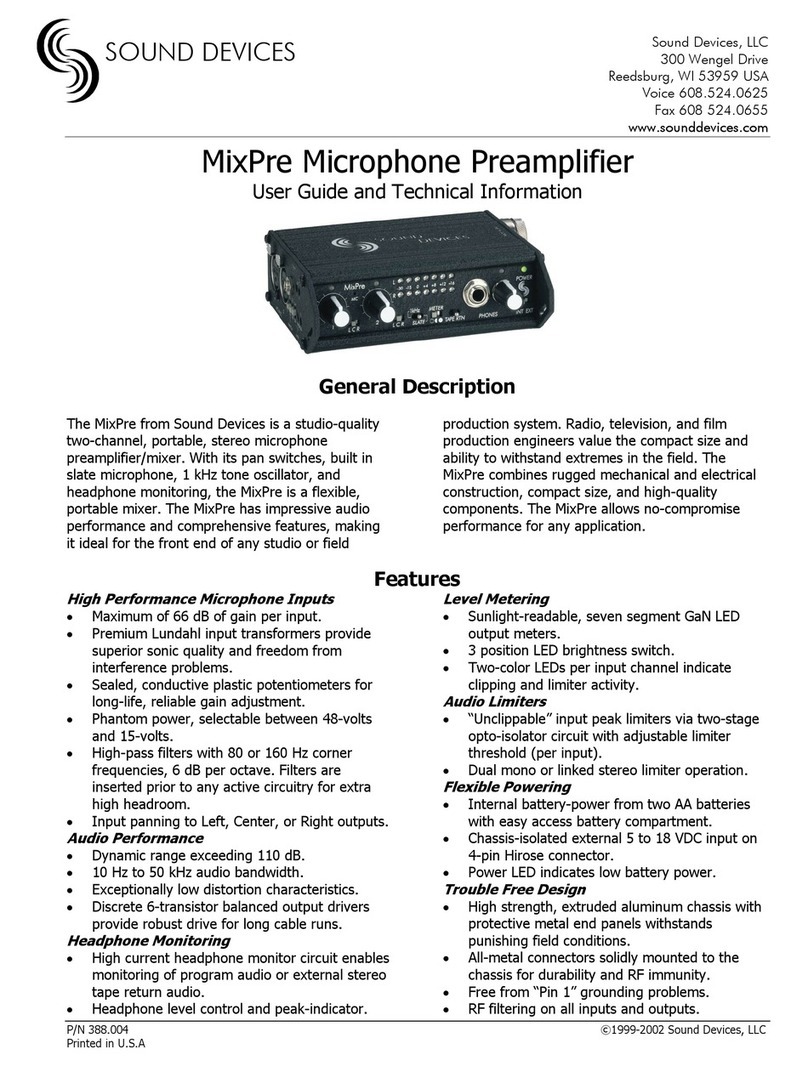
Sound Devices
Sound Devices MixPre User manual
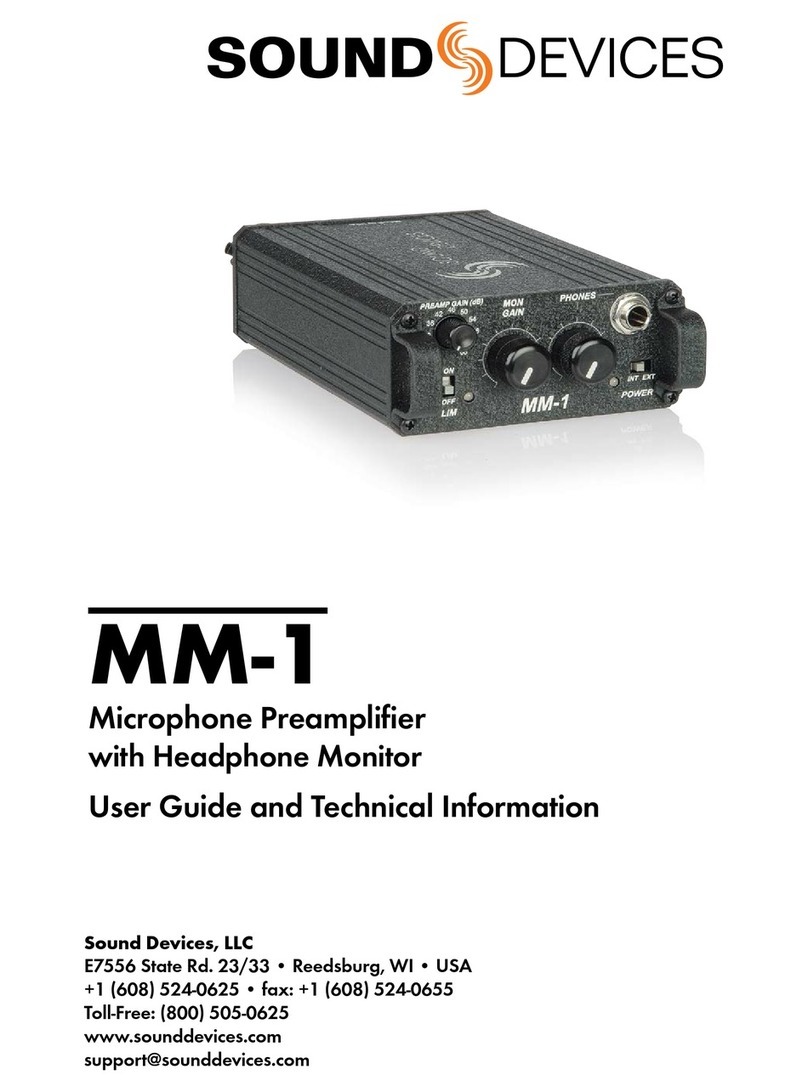
Sound Devices
Sound Devices MM-1 Manual
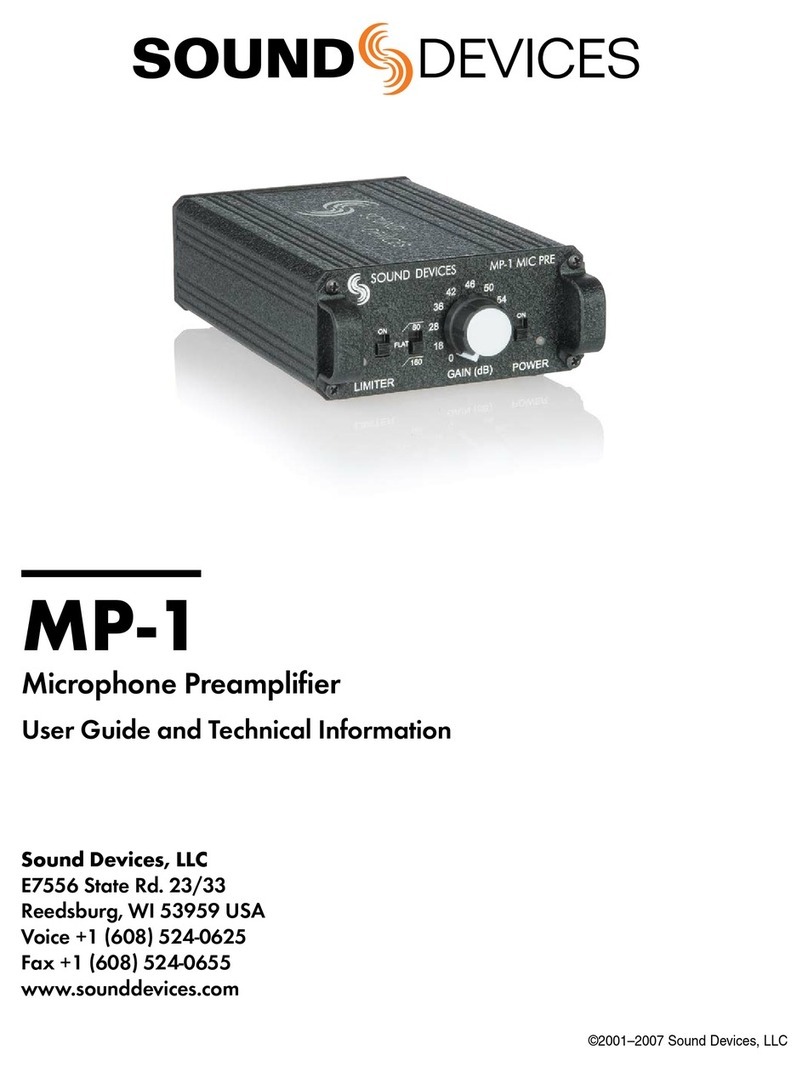
Sound Devices
Sound Devices MP-1 Manual

Sound Devices
Sound Devices MixPre User manual

Sound Devices
Sound Devices MixPre-D Manual
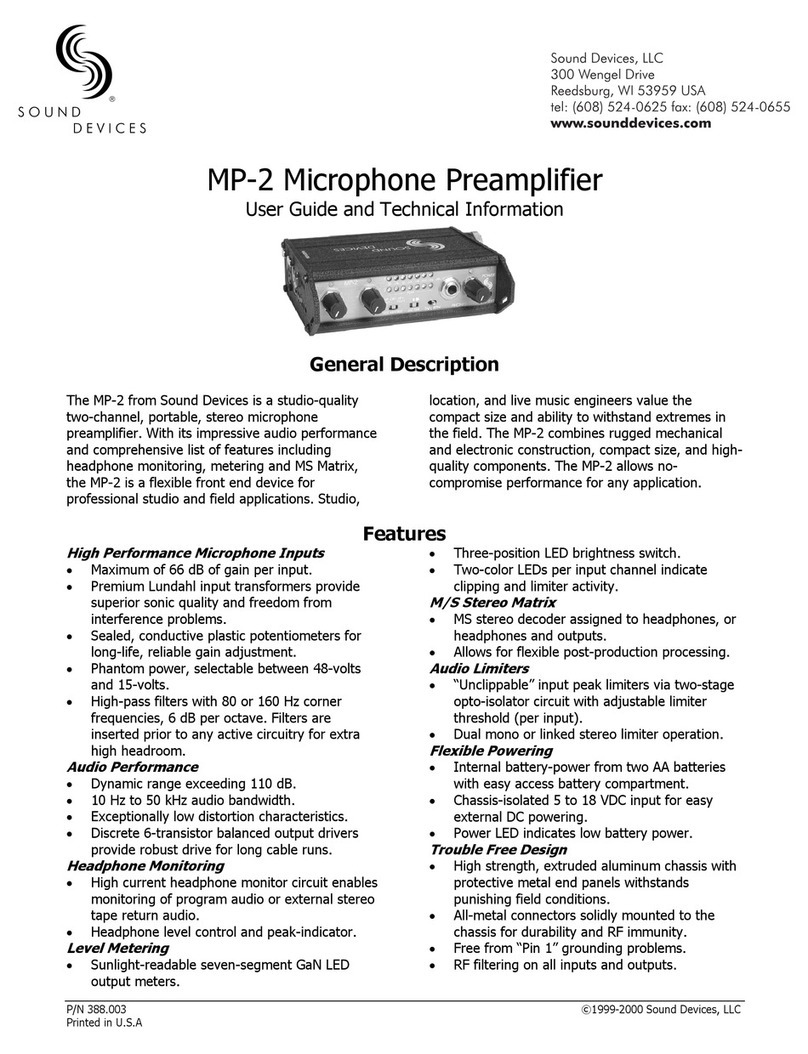
Sound Devices
Sound Devices MP-2 Manual

Sound Devices
Sound Devices MM-1 User manual

Sound Devices
Sound Devices HX-3 User manual
